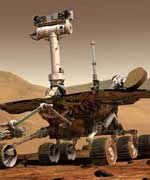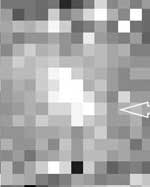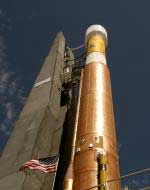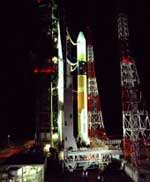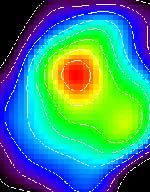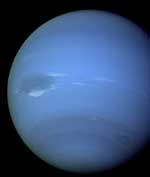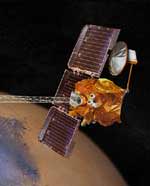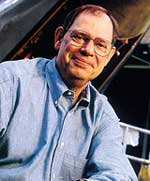
Image credit: Boeing
Boeing chairman and CEO Phil Condit announced his resignation this week after a flurry of scandals rocked the company over the last few weeks. His departure follows the company’s CFO, Michael Sears, who was investigated for unethical conduct in the hiring of an Air Force official this year. Boeing was also hit with ethics violations from the Pentagon after it was revealed that the company had stolen a competitor’s documents during a bid for space launch services. Condit himself isn’t under investigation, however.
announced today that its board of directors has accepted the resignation of Phil Condit, 62, as chairman and CEO. After thorough deliberations, the board decided that a new structure for the leadership of the company is needed and named Lewis E. Platt, 62, as non-executive chairman and Harry C. Stonecipher, 67, as president and CEO, effective immediately.
Both Platt and Stonecipher are experienced leaders who are knowledgeable about the company?s operations and strategy. Platt has been a member of Boeing?s board of directors for four years; he is a retired chairman of the board, president and CEO of Hewlett-Packard Company. Stonecipher retired from Boeing in 2002 after working closely with Condit for five years in several roles, including vice chairman, president and chief operating officer. Stonecipher also has served as a Boeing director for six years.
“Boeing is advancing on several of the most important programs in its history and I offered my resignation as a way to put the distractions and controversies of the past year behind us, and to place the focus on our performance,” Condit said. “I am proud of the strategies that have transformed Boeing into the world?s largest aerospace company, and I have the highest regard and respect for Lew and Harry. They each possess the knowledge, experience and leadership to take this company to the next level. I will watch the progress of Boeing with great pride.”
“The board appreciates that Phil acted with characteristic dignity and selflessness in recognizing that his resignation was for the good of the company,” said the new chairman, Lew Platt. “We accepted his decision with sadness, but also with the knowledge that changes needed to be made. The board is confident that the new leadership will bring a renewed focus on execution and performance.
“The board is in unanimous agreement that the company has been pursuing the right transformation strategy and that Boeing is in excellent financial condition,” he said.
“As the non-executive chairman, I will bring to bear the full strength and perspective of the board in guiding the company and assisting Harry in any way he requests. Harry will be responsible for executing our strategy and running every aspect of the company,” Platt said.
“Boeing has a solid foundation for the future ? strong businesses, valuable assets, and thousands of hard-working, dedicated people ? and we are all deeply grateful to Phil for his contributions and accomplishments,” Stonecipher said.
“We have the right strategy. The task before us is to execute. We need to strengthen our reputation with our customers, employees, investors and the communities in which we operate. Lew and I, and the entire board, are determined that the events of the last year no longer obscure the company?s strengths or distract us from what we need to do. Boeing is a great company with tremendous capabilities to define the future in each of our markets and deliver consistent, profitable growth,” said Stonecipher.
Lew Platt joined Hewlett-Packard in 1966 in the medical products operations and went on to manage various parts of HP?s computer business. He became an executive vice president in 1987 and retired in 1999 after serving seven years as chairman, CEO and president of HP. He was the CEO of Kendall-Jackson Wine Estates from 2000 to mid-2001.
Platt earned his bachelor?s degree in mechanical engineering from Cornell University and has a master?s degree in business administration from the Wharton School of Business, University of Pennsylvania. He serves on the boards of 7-Eleven, The Packard Foundation and the Wharton School.
Harry Stonecipher?s aerospace career spans more than 47 years from his start at General Motors? Allison Division as a lab technician to being elected vice chairman of The Boeing Company in 2001. In 1960, he joined General Electric?s aircraft engine operations, and progressed through a series of engineering and program positions, ending up running the division from 1984 to 1987.
In 1987, Stonecipher left GE to join Sundstrand and shortly thereafter became president and chief operating officer. He became president and CEO in 1989 and assumed the additional office of chairman in 1991. During his seven and a half years at Sundstrand, Stonecipher repaired the company?s seriously damaged customer relationship with the U.S. Department of Defense.
Stonecipher joined McDonnell Douglas in 1994 as president and CEO. In his short 33 months at the aerospace company he increased the financial performance of the enterprise, saw a four-fold increase in the share price, and led the merger with Boeing in 1997. At completion of the merger, Stonecipher was elected president and chief operating officer and a member of Boeing?s board.
He has a bachelor?s degree in physics from Tennessee Technological University and serves on the board of directors of PACCAR, Inc.
Original Source: Boeing News Release

